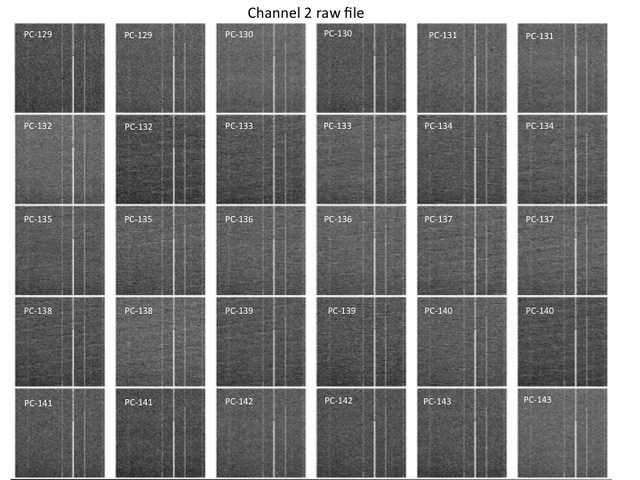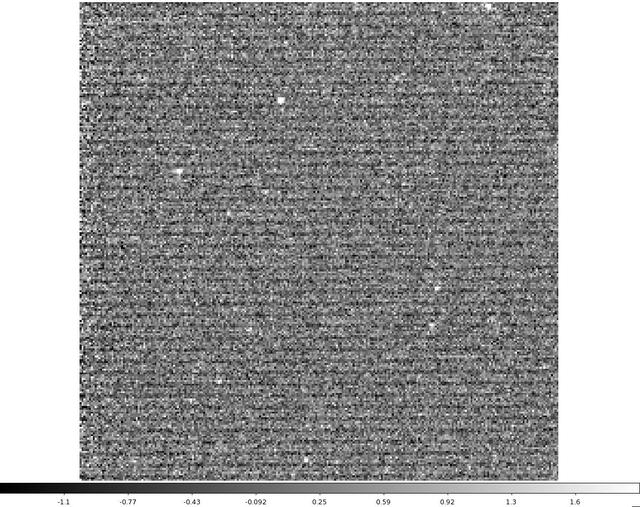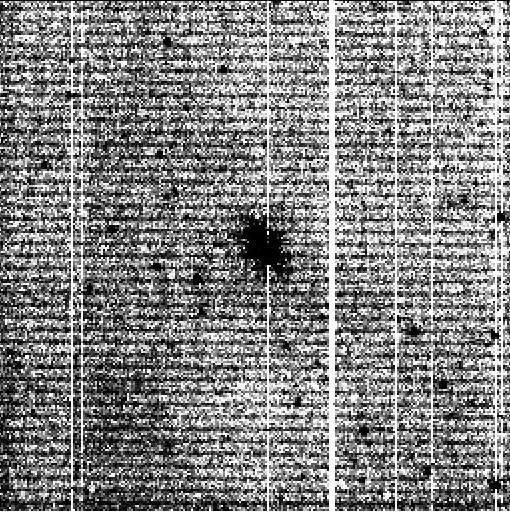IRAC High Precision Photometry
Datasets:
The pattern noise or "horizontal striping" (see example images below) appears to randomly affect an indeterminate number of successive frames in an AOR. It was first noticed to affect the data more continuously on July 25, 2014. The pattern noise disappeared around December 9, 2014 but it reappeared briefly in some of the skydarks taken on March 13, 2015.
Symptoms:
After July 25, short frame time (less than 12s) images began to indiscriminately contain a low-level interference modulation of the signal across the array, or pattern noise ("horizontal striping"). A more careful investigation of images from all the AORs in one full campaign revealed that the pattern noise or striping affected all frame times, but it is most prominent in the shortest frame times because of their lower backgrounds and fewer fowler samples. The pattern noise is stronger in channel 2 than in channel 1 (again presumably due to the lower background in channel 2). Its intensity can vary from barely detectable to easily seen, when looked at with the histogram equalization scaling. Subarray frames were found to be affected as well, although the noise is much higher in them and the effect is harder to see.
Explanation:
There is currently no detailed understanding of the origin of this effect, although it is believed to be related to electronic interference, probably from current running in some nearby part of the spacecraft, such as the battery charging currents. The incoming data are being continually monitored while we continue to determine the cause of the pattern noise. Our current approach dealing with pattern noise is as follows:
- Skydark frames that exhibit pattern noise are discarded and not used for processing data in the pipeline.
- Tests were made to perform aperture photometry on data with pattern noise. No statistically significant difference in the derived flux densities were found when comparing point source photometry of the same source in observations with and without the pattern noise.
- Possible interference sources were examined using housekeeping telemetry data, including various sources of current that are measured on the spacecraft and in the instruments. No strong correlation has been found so far between the housekeeping telemetry and the ON/OFF periods of pattern noise (or striping).
Currently we are not aware of any measurable effects on aperture photometry from pattern noise, but we encourage users to be aware of this noise source, and ask them to email the Spitzer Helpdesk (help@spitzer.caltech.edu) if they see measurable effects from pattern noise in their data sets.

0.4s frame time skydark raw images (channel 2), beginning in IRAC campaign PC-129 (July 2014) and ending in PC-143 (January 2015). The pattern noise (stripes) can be clearly seen to appear in PC-132 (August 2014) and it remains at about the same intensity level in subsequent campaigns. After PC-141 (Jan 2015), the pattern noise is no longer seen in these images.

Strong pattern noise seen in a 2s BCD.

Strong stripes in a 6 second frame time raw image in channel 2.